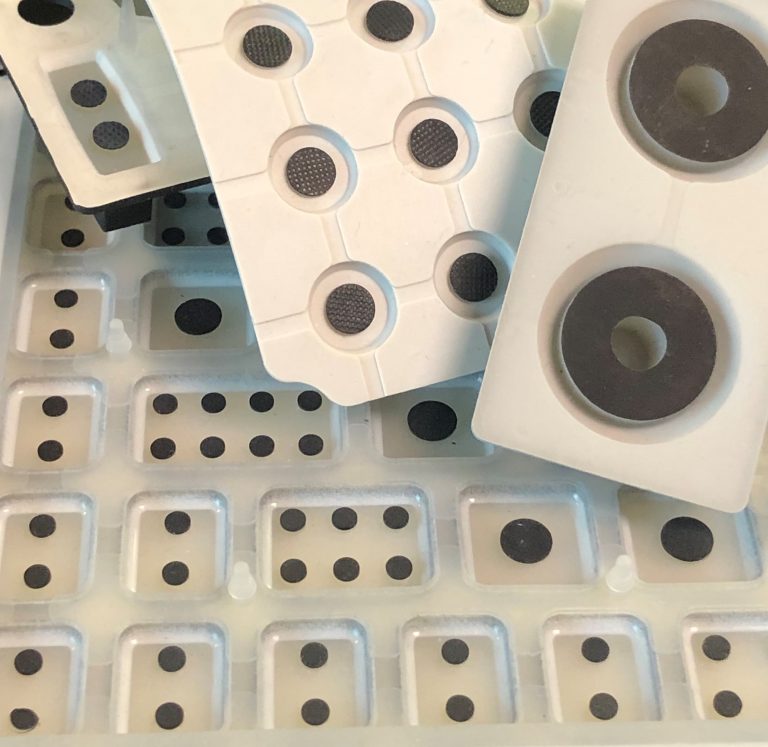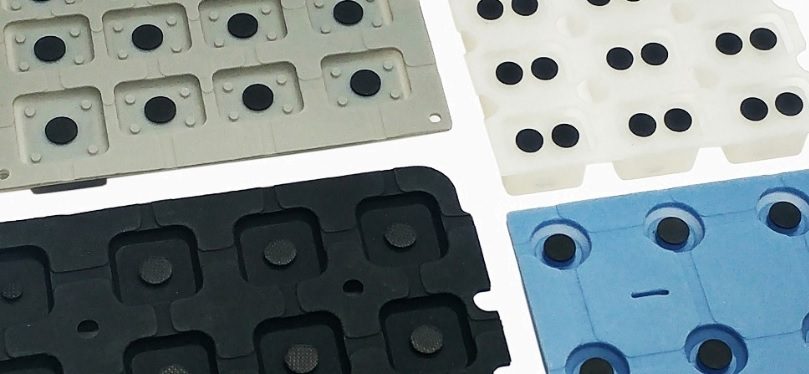What are Carbon Pills in Rubber Keypads?
A typical silicone rubber keypad involves designing a flex wall around the perimeter of the button. When the key is pressed, the flex wall flexes and produces a tactile response (similar to a spring). When the key is fully pressed, the flex wall allows the center of the key to make contact with the circuit.
In rubber keypads, there are typically two methods of making contact with the actual switch: dome switches or conductive carbon pills. Conductive carbon pills are typically manufactured from a silicone conductive material that contains carbon. Conductive pills are molded into the actuators of the keys. When the carbon pill makes contact with the circuit, it is closing the circuit on a printed circuit board or flexible circuit trace.
Conductive carbon pills are usually silicone based and can be round, oval, or rectangular in shape. Carbon pills can range in size depending on the size of the key but typically available from 2.0mm to 8.0mm in diameter. Multiple carbon pills can also be utilized and designed into the part to ensure solid contact is made depending on the key shape, size and design of the keypad.


